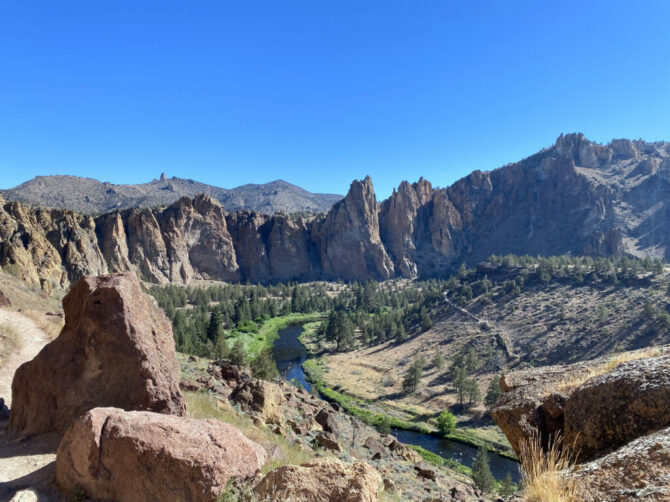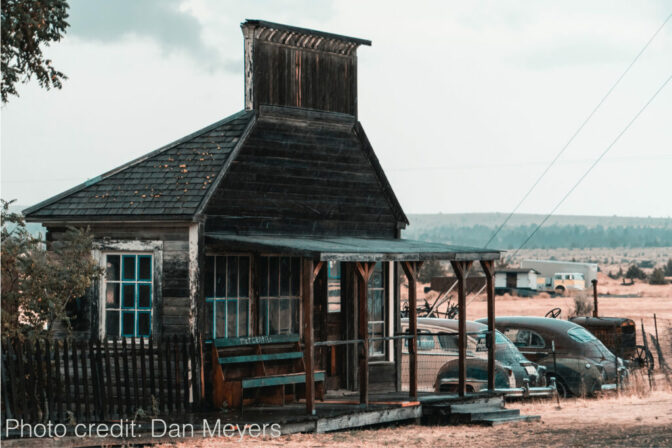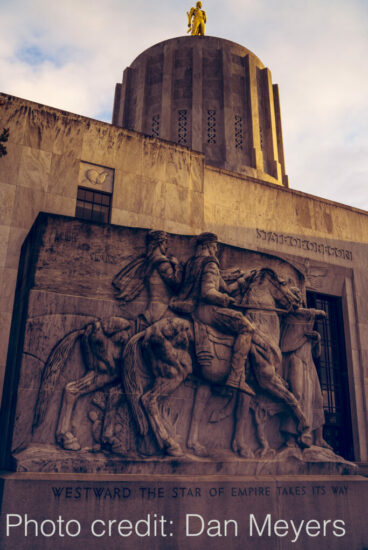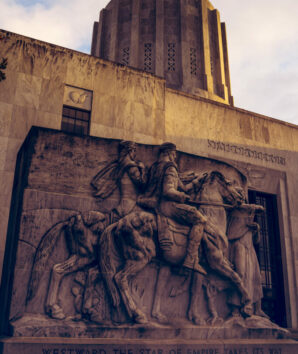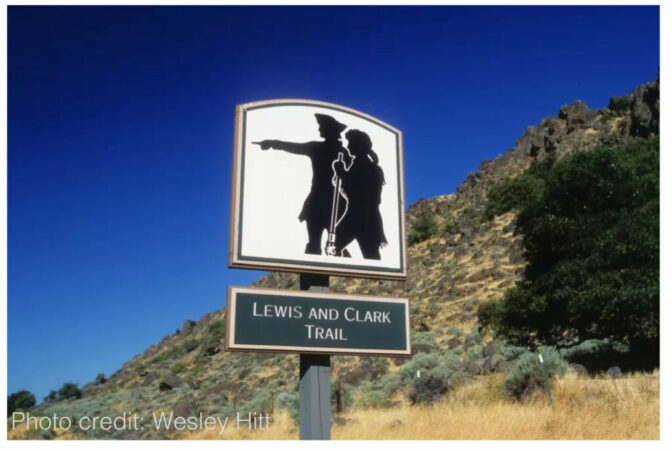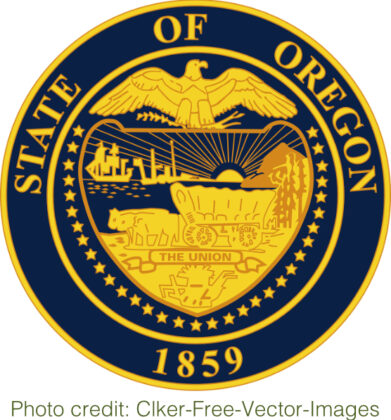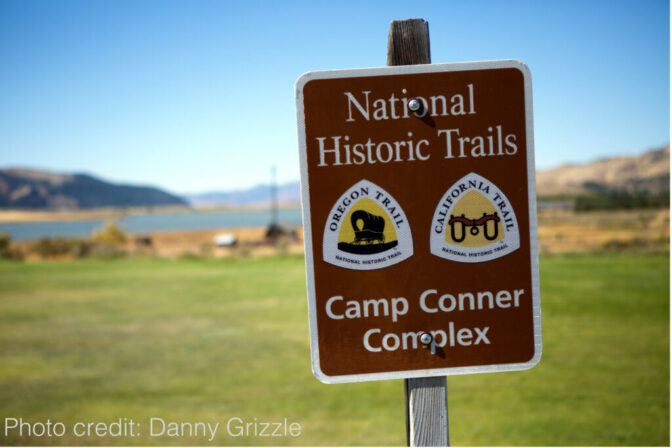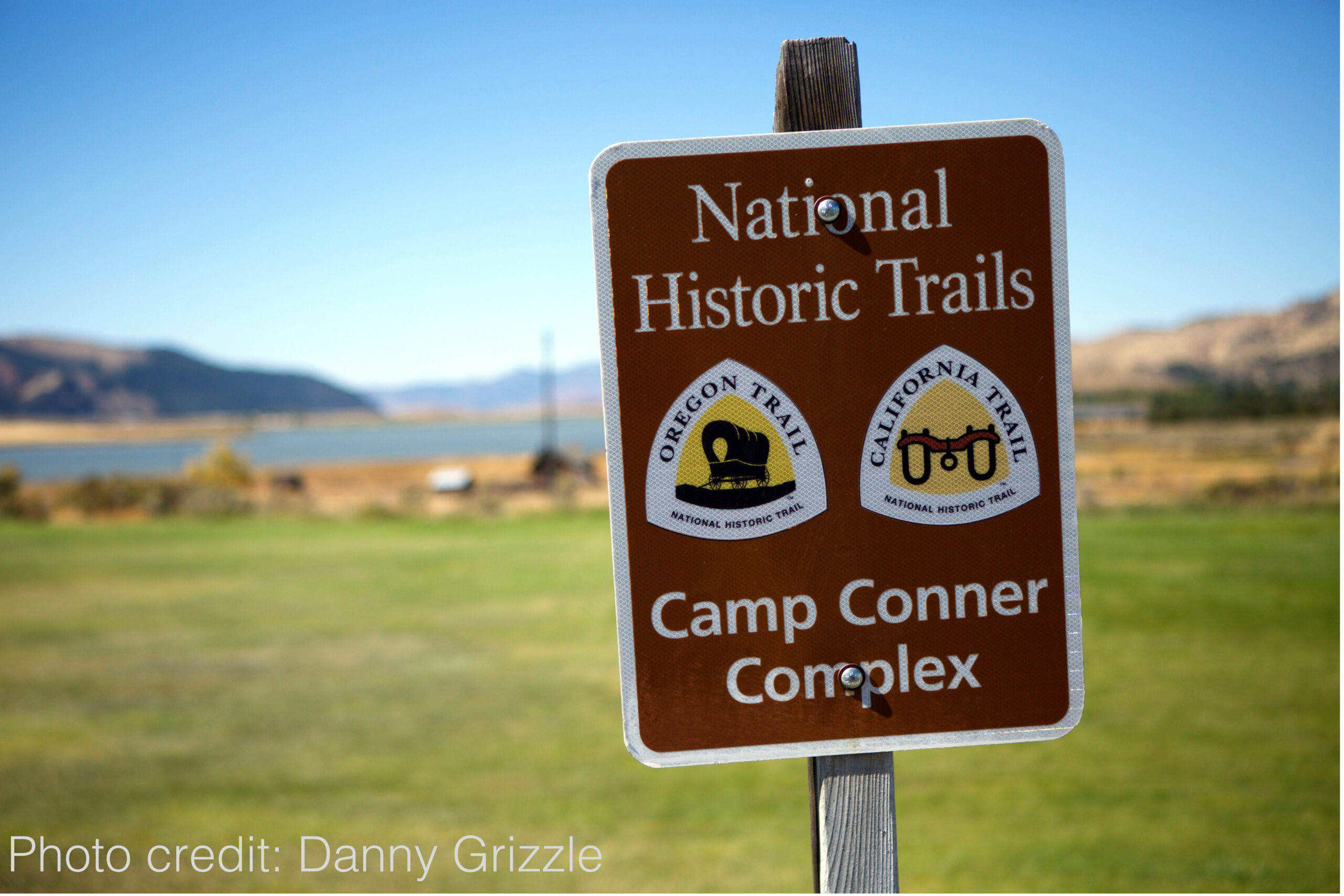Regions
Oregon consists of 36 counties, which can be divided into different regions. For most Oregonians, there are the following eight regions, although the boundaries do not always run exactly along the counties and the names are for general orientation. Learn more about Oregon’s regions here.
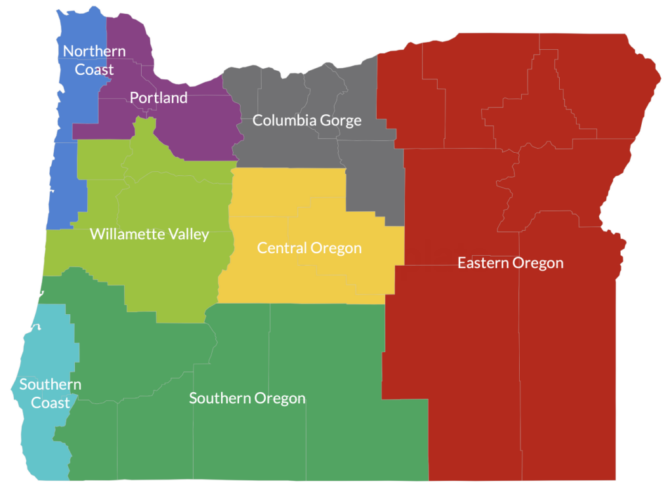
Geography
In no other field does the statement about Oregon’s diversity apply better than with regard to geography. Few other states can match Oregon’s diversity of forests and coasts, lakes and rivers, fields and deserts, mountains and volcanoes. Driving from the coast, you can experience all of it in just 5 hours to Bend in Central Oregon. Crater Lake in Southern Oregon is the deepest lake in the United States and Mount Hood is the highest mountain in Oregon at 11249 feet. As a European, I know high mountains mainly in mountain chain form, as found in the Alps or the Pyrenees. Accordingly, I was fascinated by the cascading volcanoes of Mount Hood, Mount Jefferson and the Three Sisters, which stand out like magical sugar canes with white peaks from the flatter desert landscape even in high summer. If the weather is good, you can see not only these volcanoes in Oregon, but also Mount Adams, Mount St. Helens and Mount Rainer in Washington from the plane when you take off and land in Portland.
Warlike Disputes with Oregon’s Indigenous Peoples
As in many regions along the Oregon Trail, disagreements between the natives and the new settlers increased. The most prominent clashes in Oregon occurred in 1872/73 and in 1877.
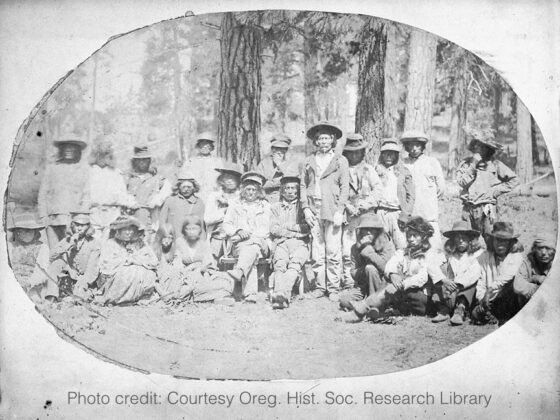
The Modoc War in 1872/73
The Modoc War in 1872/73
In 1864, leaders of the Klamath, Modoc, and Northern Paiute tribes had agreed to a treaty with the Union which provided for their relocation to a reservation east of the Cascades. However, only about half of the Modocs were actually willing to give up their home on the Lost River (south of present-day Klamath Falls on the California border). The Modocs led by Kientpoos, also known as Captain Jack, attacked U.S. troops several times before being captured and executed in a final confrontation in 1873. The remaining 150 or so Modoc tribesmen were relocated further northeast to what is now Oklahoma.
The clashes with the Modoc were one of the most expensive for the U.S. Army at the time, as the supply of soldiers and supplies over the poorly prepared trails, especially in winter, was very costly and protracted. Thus, the mostly outnumbered Modocs repeatedly inflicted great damage on the U.S. troops before the conflict came to an end in the summer of 1873.
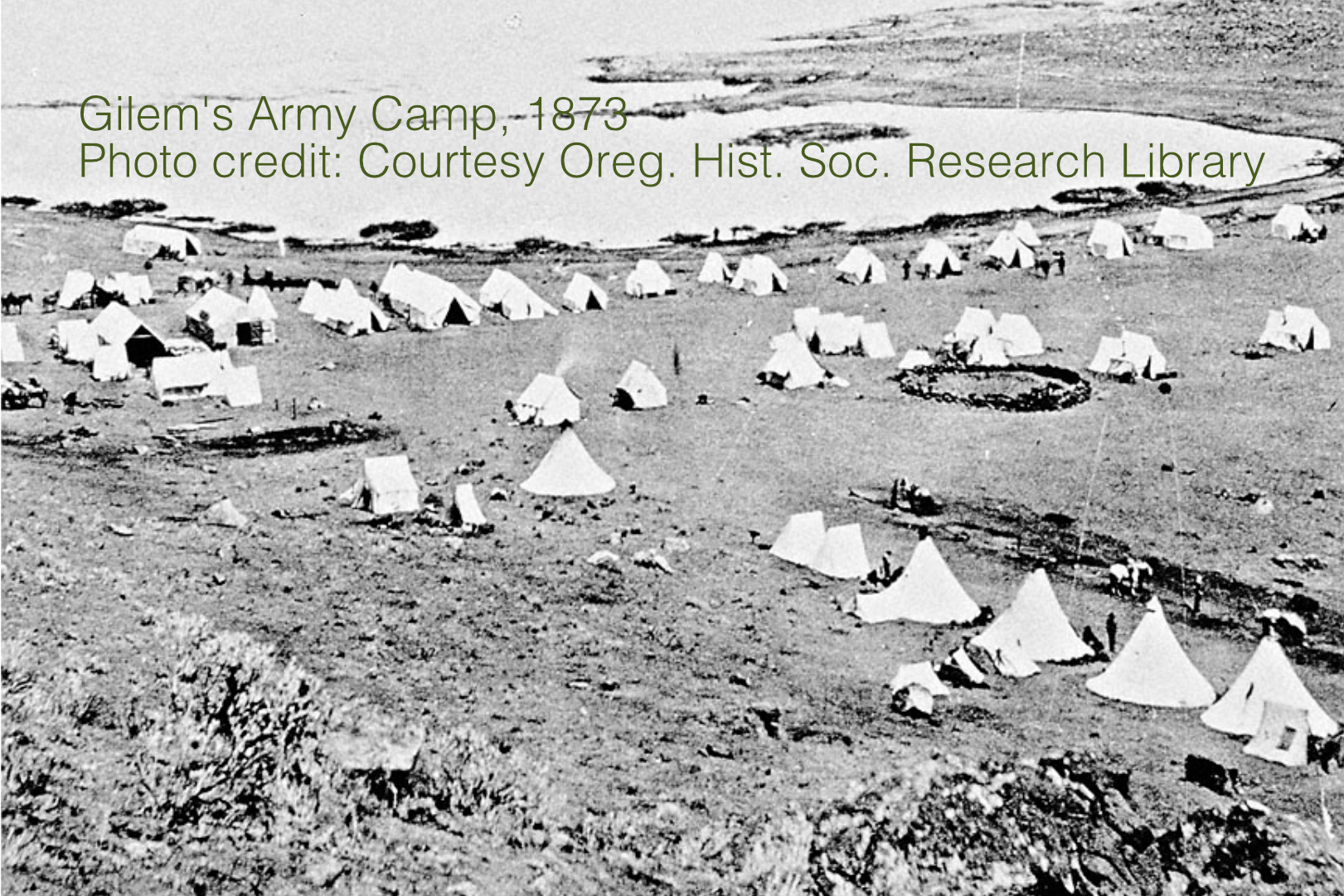
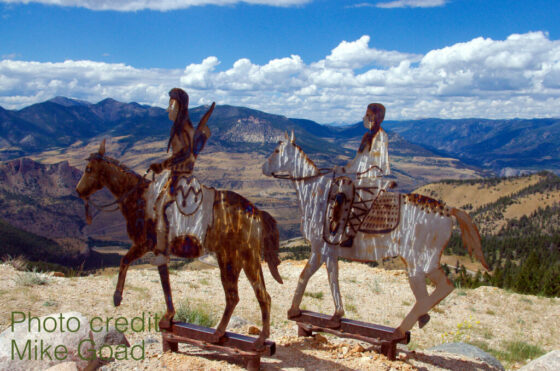
The Nez-Percé-War
The Nez Percé War
Like the Modoc and the Klamath, the Americans had granted the Nez-Percé a large reservation area in their traditional tribal territory by treaty in 1855. Conflict with the Nez-Percé did not arise until 1863, when the Americans wanted to reduce this area to one-tenth of the originally agreed size. Most likely gold had been found in this area, which the Americans claimed for themselves. Only some of the Nez Perce tribal chiefs signed the new territorial treaty. The group led by Chief Old Joseph refused to leave the Wallowa Valley in Oregon in the following years. In 1877, the Americans decided to take military action against the adversaries. After some warfare, the Nez-Percé fled across Idaho and Montana toward Canada, where they were caught up and stopped by U.S. troops 30km from their destination.
The remaining tribesmen were first taken to Kansas, then in 1879 also to Indian Territory (Oklahoma), where most of them died. The tactical leader, Chief Joseph (son of Old Joseph), continued his efforts to secure the return of his people to their former homeland after the surrender. He became an active political figure, advocating for the interests of the Nez Percé even in Washington DC before ministers and congressmen. Chief Joseph, interestingly, was also considered very positive by the Americans. However, it was also noted that he had not been the principal military leader of the Nez-Percé. The Chief Joseph Scenic Byway to Dead Indian Summit from Montana to Wyoming still commemorates one of the most prominent Native Americans of his time.
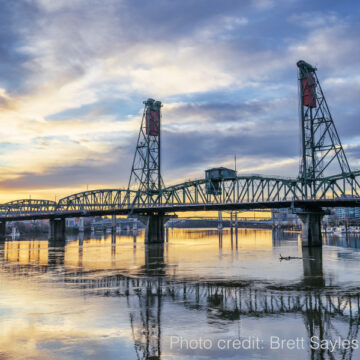
Oregon’s rail network
The expansion of the rail network contributed to the economic growth of Oregon’s timber industry and grain farming. Faster growing cities became more popular, and more and more people moved to Oregon. With the introduction of the transcontinental railroad, Oregon also began to industrialize.
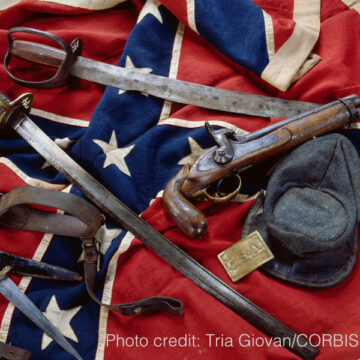
Oregon in the American Civil War
During the American Civil War, U.S. troops were withdrawn from Oregon and Washington for fighting in the East beginning in 1861. In 1862, the first Oregon Cavalry was raised and served until 1865. As clashes with various indigenous tribes increased beginning in 1864, Oregon’s first volunteer infantry regiment was formed to protect travel routes, reservations, and migrants.
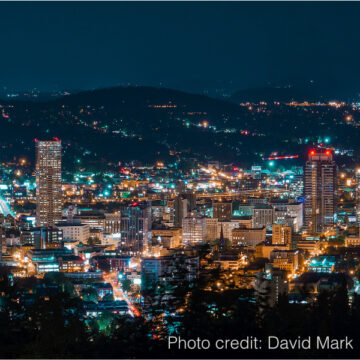
Oregon in the 20th Century
Oregon’s 20th century was marked by the region’s increasing industrialization and statewide conjunctures and recessions. Highly polarized conflicts had their beginnings in Oregon as early as the disputes between indigenous peoples and fur trappers. Competing social groups often faced and still face each other in Oregon – poorer rural areas vs. wealthy cities, environmentalists vs. loggers, conservatives vs. progressives.
Take the wings of morning, pierce the Barcan wilderness,
Or lose thyself in the continuous woods
Where rolls the Oregon, and hears no sound,
Save his own dashings
~ Thanatopsis, William Cullen Bryant, 1811 ~

